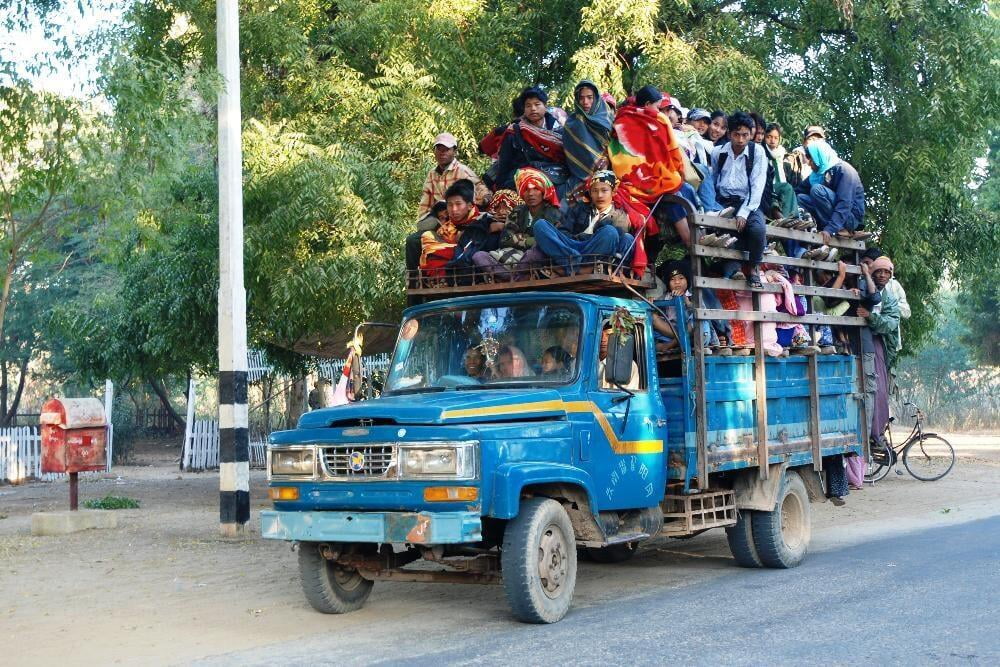These 10 Simple Hitchhiking Tips Will Turn You Into A Pro In No Time
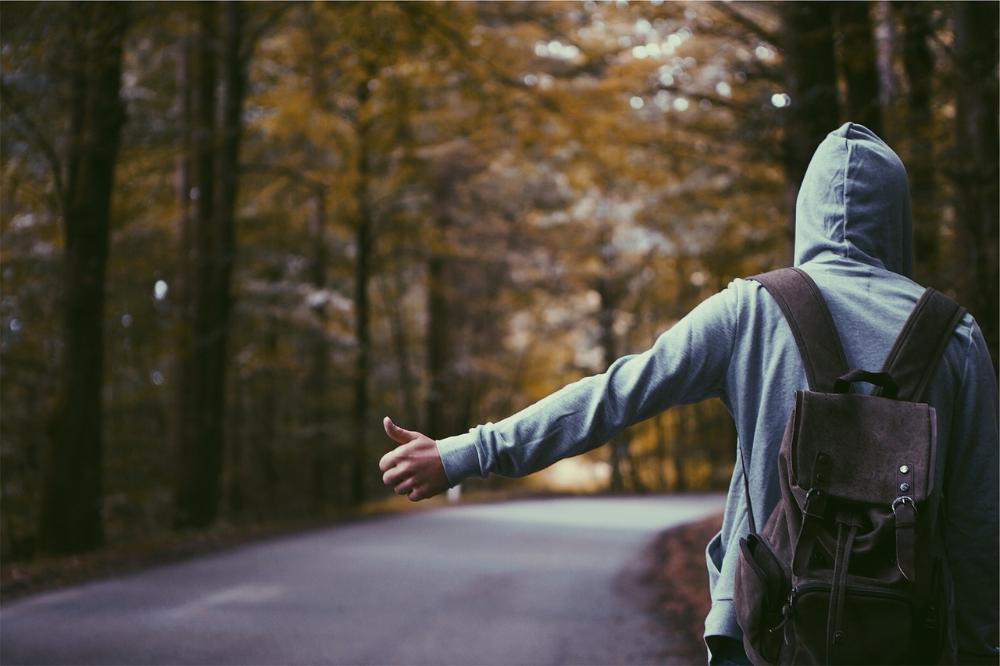
Hitchhiking can be an interesting and exciting way to get around the quiet backroads and lanes of the countryside, or to travel major routes between towns and cities.
The wonderful thing about hitchhiking is that it’s usually pretty reliable (although sometimes long waits are necessary) and it’s normally totally free.
Hitchhiking is therefore a great way to save money on transportation while having an exciting and unpredictable travel adventure in a foreign country.
There isn't really any limit to how far you can travel by hitchhiking. People have hitchhiked across entire continents and have even circumnavigated the globe, covering thousands of miles.
Likewise, there are also no real restrictions regarding which countries you can hitchhike through, although drivers may be more reluctant to pull over in countries where hitchhiking is illegal or frowned upon.
In many countries however, hitchhiking is only illegal alongside major highways but is permitted overall.
Hitchhiking is not as risky as many people believe. A few isolated bad incidents does not change the fact that statistically, hitchhiking is a safe activity, especially if you avoid hitchhiking alone or at night.
Common sense and heeding your gut feeling will also go a long way towards keeping you out of trouble and if you follow most of our other essential travel safety tips, you should be just fine.
If you try hitchhiking, you will undoubtedly have encounters and conversations with many diverse and interesting people that you wouldn't otherwise have met. This can be one of the most rewarding aspects of hitchhiking for many people.
Also, because hitchhiking ultimately relies on the kindness, openness and generosity of strangers for its existence, you may find that if your faith in humanity is a little lacking, a successful hitchhiking adventure might just help to restore it.
Two important life lessons that hitchhiking is sure to teach you are those of patience and surrender. At first you may find it frustrating, having such a lack of control over your journey. You will have little control over who picks you up and how far they'll be able to take you. There is no knowing when you'll arrive at your destination. You will ultimately learn to surrender the futile initial attempts to control the particulars of the journey and just let fate decide.
That said, while largely a game of chance and patience, hitchhiking is not entirely so. There are a few variables that you do have control over and they will have a small, yet significant impact on your success in this game. This article deals with those variables and how to best use them to your advantage.
The article will cover our 10 best tips for successful hitchhiking. Start implementing these tips on your next hitchhiking adventure and you’ll increase your chances of getting a ride, reduce the amount of waiting time and you’ll be sure to stay safe and have an enjoyable experience.
Tip #1 - Hike to the town outskirts
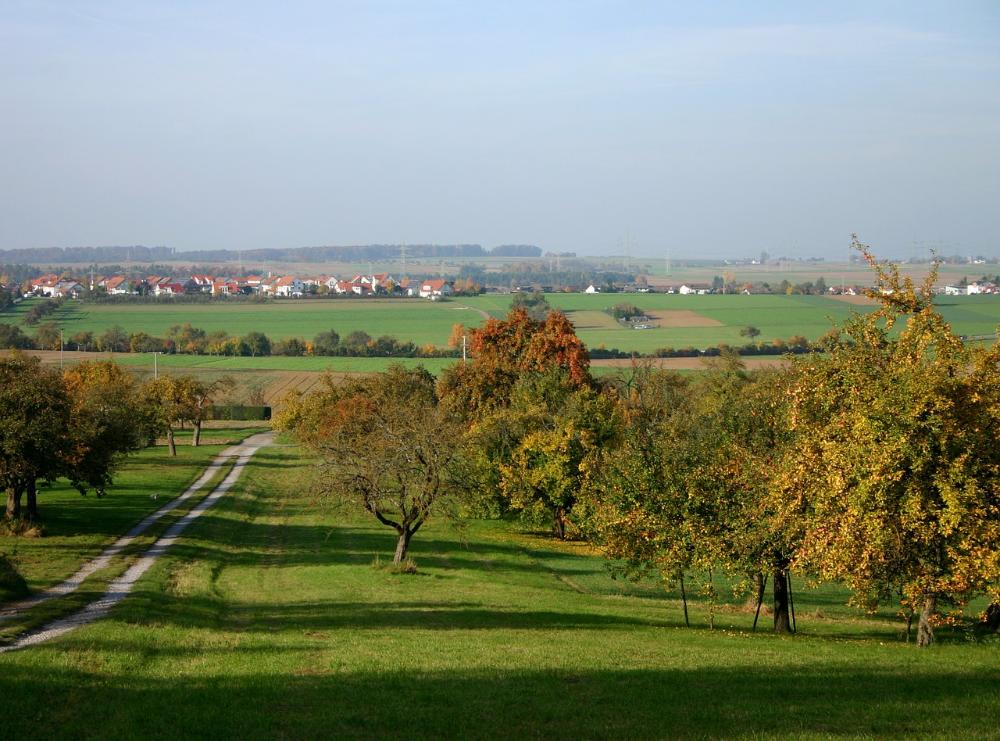
It’s essential to first make your way to the outskirts of the town or city you want to hitchhike out of. You must reach the point at which you are truly beyond the outer limits of the town/city and be positioned on that long, uninterrupted road that leads towards your next destination.
This strategic move serves to filter out all the vehicles that are not making journeys to the next town or city. You then don’t waste your time trying to thumb down local traffic that is useless to your goal of getting a ride to a place far away.
Tip #2 - Make a large sign with your next destination clearly written on it
It’s not a bad idea to whip up a nice sign before you hit the road. It doesn’t have to be anything fancy; just a large piece of stiff cardboard (or any other suitable and readily available material) with a white background and your next destination written in eye-catching bold, capital letters with a black marker.
The sign is key to communicating to drivers where you’re headed, whether it’s the next town or 20 towns away. The sign should help to filter out drivers that are not going far enough to be of much help to you and should also confirm to drivers who might be otherwise unsure about your destination that they can help you out, thereby making them more likely to pull over.
Tip #3 - Situate yourself in a convenient and safe place for vehicles to pull over
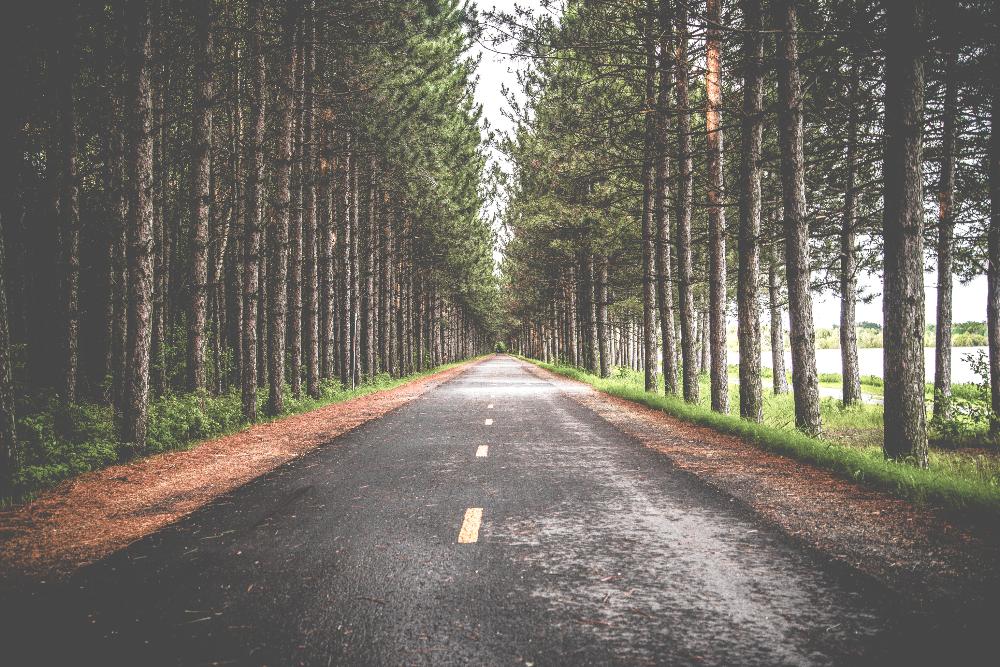
You may have done everything else right but if you’re trying to thumb down a vehicle in a location that makes it difficult or dangerous for vehicles to stop or pull over, then your chances of getting a ride will be severely diminished.
Definitely avoid hitchhiking at sharp bends on country backroads; straight stretches of road are a much better option.Look for places where the road temporarily widens, small indentations, long straight stretches or basically just any places where a driver would naturally pull over if they needed to stop for any reason.
Tip #4 - Take advantage of slow moving traffic
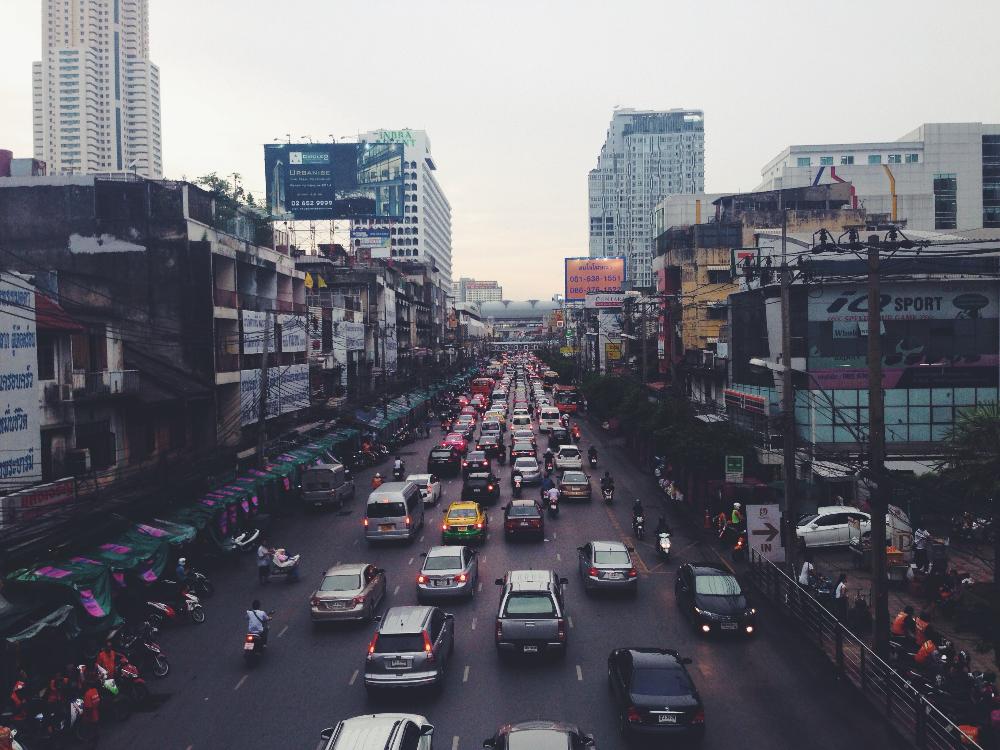
If you’re trying to hitchhike on a road with very fast moving vehicles, it may be more difficult to persuade drivers to stop. By the time they’ve spotted you and decided that they’d be willing to give you a ride, they may have already driven too far beyond that safe spot for them to pull over and may be forced to continue driving.
People's inertia or laziness is another factor that makes fast moving vehicles less likely to stop for you. It's a lot easier to just keep moving at high speed than it is to bring the vehicle to a halt. Larger trucks and lorries particularly, take ages to stop if they’re moving at high speed.
Also, drivers in fast moving vehicles can often be less aware of their surroundings and might not even notice you standing there as a hitchhiker. At higher speeds drivers tend to become more detached from their surroundings (since they're just whizzing by) and your attempts to make eye contact with them become less effective.
On the other hand, when vehicles are crawling by the hitchhiker at an agonizingly slow pace, a more powerful tension is created between the driver and the hitchhiker.
To combat the problem of fast moving vehicles, try waiting in places where vehicles are naturally moving more slowly or are completely stationary, such as at gas stations, parking lots, traffic lights, near speed ramps, slip-roads onto major highways, approaches to roundabouts etc.
Tip #5 - Make strong eye contact with the driver and stick out your thumb with conviction
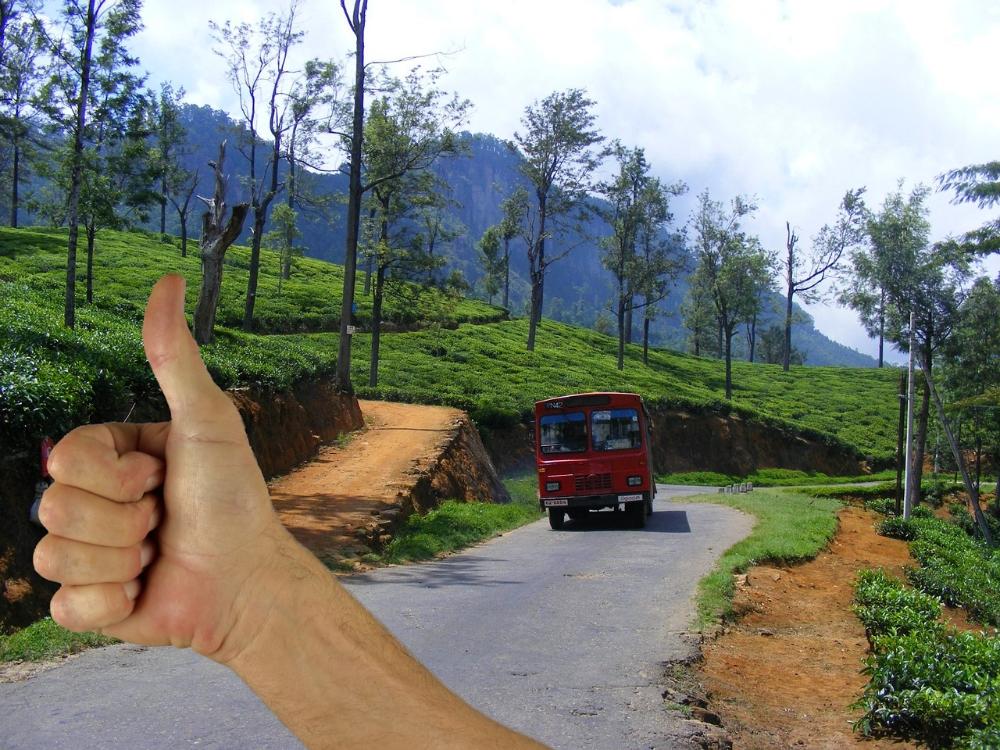
This is a very important tip to implement when trying to increase your chances of getting a ride. Making strong eye contact with the driver of the approaching vehicle will put social pressure on the driver to pull over for you.
It creates a connection, if only for a moment, between you and the driver and because of this, the driver may be more likely to feel a sense of duty towards giving you a helping hand. Making eye contact gives the driver the impression that you are looking specifically at him to help you out and makes him feel personally targeted and relied on to help you out.
In addition to good eye contact, you’ll need to stick out your thumb. Step out to the edge of the road, making yourself as visible as possible, face the oncoming traffic directly and stick that arm and thumb out with as much conviction as possible. Don’t hesitate out of a fear of rejection as the driver can sense that. Make sure you stick out your thumb a few seconds before the driver reaches your position as this gives the driver time to react and pull over.
Tip # 6 - Maintain a positive attitude & smiling face
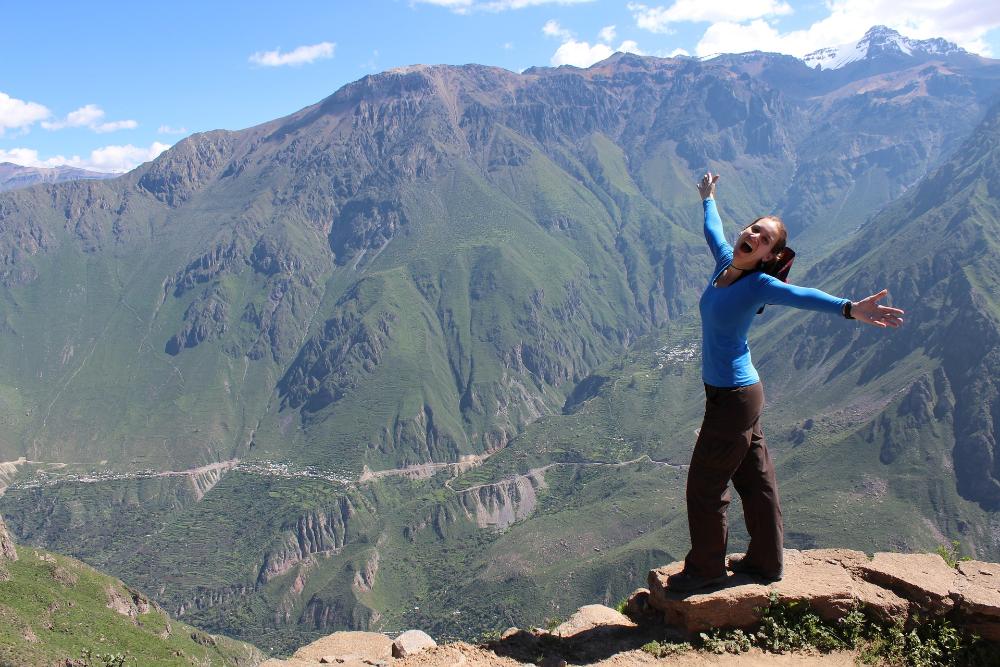
One has to remember that a driver’s only reward for pulling over and giving you a ride is your company (unless you're offering some free goodies). It's better to offer the driver a positive reward for pulling over rather than trying to guilt the driver into stopping.
Of course, circumstances will sometimes inevitably guilt the driver into pulling over; circumstances like bad weather, hitchhiking in very remote areas, very weary or dejected looking hitchhikers and so on.
However, you won’t always have the benefit of such circumstances and so, you should always endeavor to give the driver the impression that you are an agreeable and friendly sort of person. Always keep a smile on your face and try not to let long waiting periods or countless consecutive rejections affect your mood.
Just as in any game of chance, you can have long losing streaks followed by a big win. That next car could be the jackpot, heading the whole way to your final destination! Don’t lose faith and keep your chin up.
Tip #7 - Complete the journey in multiple short legs
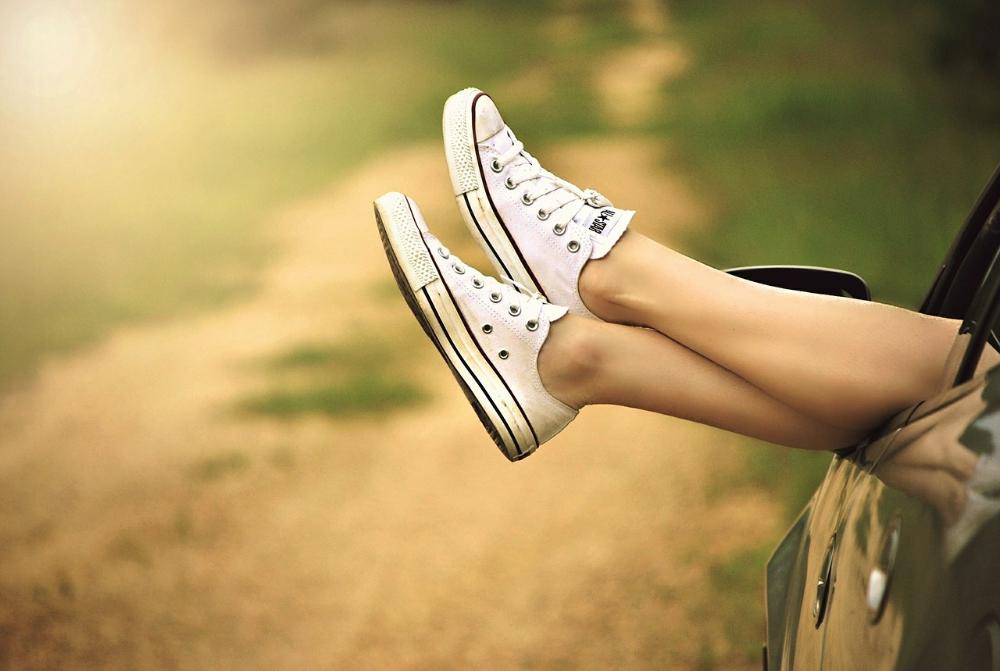
To avoid despair and extremely long waiting periods, it’s often better to divide the journey into several short legs. This tip is especially applicable in situations where you’re travelling on smaller back roads and you're encountering a lot of local traffic that won't be going very far.
In these situations, drivers that are going in the general direction of your destination will see your sign, pull over for you and offer to take you just a part of the way, perhaps just to the next town or junction. You should accept such offers.
After all, it's far easier to find a driver that is going to the next town, say 15km away, than finding one that is driving the full, say 300km, to your final destination. However, if the driver offers to take you a trivial distance, like say 1km, then perhaps you might prefer to continue waiting for a better opportunity to come along.
Tip #8 - Keep moving between bouts of heavy traffic
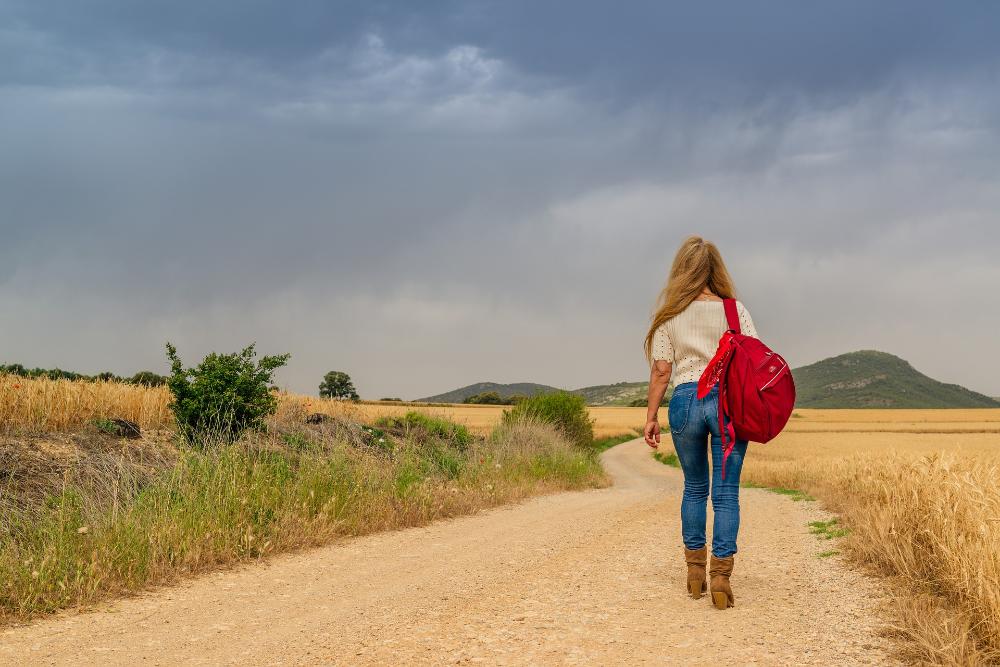
Remember, the term is hitch ‘hiking’. We’re hoping to hitch a ride, but there will be periods or stretches of road when traffic is very light and your time is better spent walking, perhaps to the next intersection where traffic will pick up again.
In these circumstances, you should be walking, always edging closer to your destination. Whenever you hear a vehicle approaching from behind, you can still always turn around to take advantage of the opportunity to thumb a ride.
If traffic starts to pick up again, you can find a new appealing spot for drivers to pull over and commence the hitching game once more. Staying mobile during the lean periods might even make the few drivers that do pass by more likely to stop, as they might be glad to see that you’re making an effort to use your own two legs.
Tip #9 - Dress well and pack properly for the occasion
.jpeg)
Dressing
The moment that a driver spots you standing at the side of the road with your thumb sticking out, his/her brain makes a split-second decision on whether to pull over or not, based on a number of factors as we’ve discussed in this article.
One critically important factor is your personal appearance. You have to remember that you're a complete stranger to that driver and by standing there with your thumb sticking out, you're essentially requesting to enter the driver's personal space.I
In order to minimize the sense of risk that the driver perceives, it's really important to look clean, presentable and trustworthy. Make sure your clothes are at least fairly clean and that you’re not looking too scruffy or unkempt.
It may not be a bad idea to wear more brightly coloured clothes as it may suggest a cheerful persona, while also making you more visible and noticeable.
Although looking haggard and downtrodden might guilt the driver into stopping, it is probably more likely to deter or discourage the driver. As we mentioned earlier, people will be more likely to stop when they feel hopeful of some kind of reward.
The driver may, for example, anticipate a stimulating conversation, hearing about your travel tales and learning something from you about the places you've travelled to in the past.
Packing
As regards packing, you should try to travel light, with a single, small backpack. Pack the essentials only, like food, water, lightweight raingear and perhaps most importantly, a good map. You can bring technology but this could potentially take away from the excitement and unpredictability of the whole experience.
If you’re hitchhiking through remote areas, then you should also pack camping gear in case you have to spend a night by the roadside.
Aside from making your trip far more enjoyable, there is also a very practical reason for packing lightweight for a hitchhiking adventure. The reason is that the sight of multiple large and heavy backpacks might actually deter a driver from pulling over because of space issues.
Sometimes the only reason a vehicle doesn’t stop for you is because there isn’t enough space for that huge backpack you're carrying.Also, travelling light could open up additional possibilities, like rides from motorcyclists.
Conversely, sitting on the back of a motorcycle with two bags or even one very large backpack will be at best, extremely uncomfortable and at worst, impossible.
Tip #10 - Avoid hitchhiking alone or at night
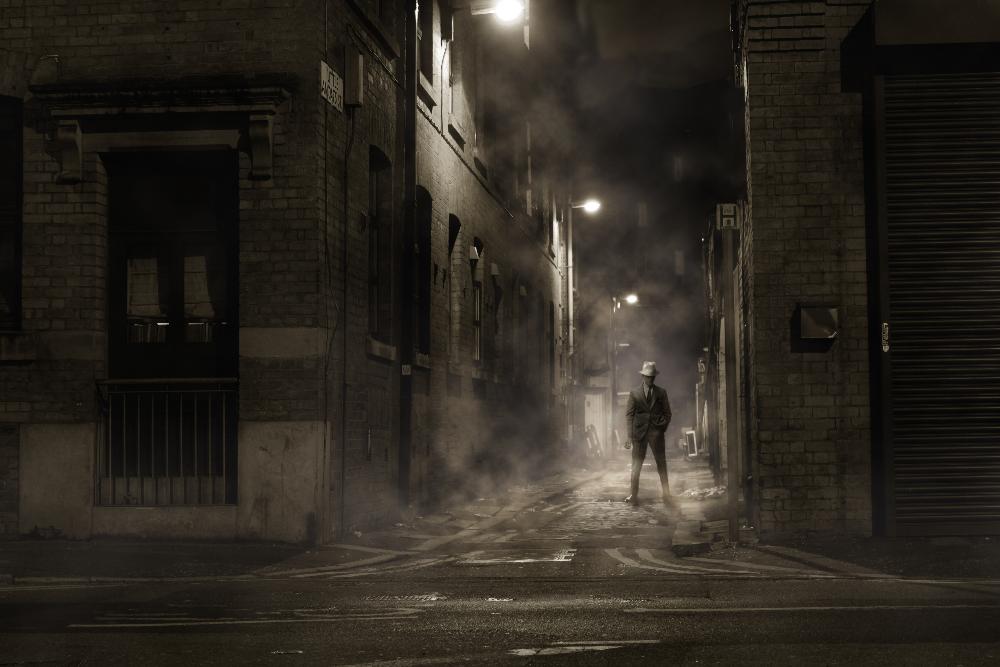
This last tip is a safety consideration. In hitchhiking, there is of course always some degree of risk; it does after all involve entering into a stranger’s vehicle without really knowing their true motives for picking you up.
There are fortunately ways to reduce or mitigate the risk however and most of them just rely on applying some good old-fashioned common sense.
The first thing you can do to make yourself safer is to avoid hitchhiking alone and instead do it in pairs. The best pair combinations are either a female-female pair or a male-female couple because drivers will view such combinations as less risky. Paired male hitchhikers will probably face the greatest difficulty because they lack that female element, which often helps to neutralize the threat of a male in the mind of the driver.
Female hitchhikers especially, should know the risks of hitchhiking alone and should team up with a friend or their partner to avoid getting into trouble.
Hitchhiking in larger groups (3+) is not recommended because of space issues or the risk of intimidating the driver. It’s generally best to stick to pairs.
Always use your intuition and assess the vibes before entering the vehicle in order to decide if the driver and any other occupants of the vehicle are trustworthy. If during the journey, you begin to feel uncomfortable or that something is wrong, you might consider exiting the vehicle prematurely with a fabricated excuse.
Hitchhiking in the night hours is also not very advisable. Sexual assault in particular is one type of crime that is more likely to occur at night time so female travellers should be particularly careful about hitchhiking after sunset.
Final thoughts
Well, there you have it, 10 important tips that once applied, should have you hitchhiking like a pro in no time.
We have had many hitchhiking experiences ourselves, in places like North America, Europe, India, Sri Lanka and in all the Southeast Asian countries. Our most amazing hitchhiking experience was when we hitchhiked the Ring of Kerry in the southwest part of Ireland. We met some interesting characters and saw some incredible landscapes. That was one of the best adventures we ever had, precisely because we hitchhiked it and let fate decide everything.
All of the tips we've shared with you in this article have been gleaned from our own hitchhiking experiences and we have always followed them, with great success as a result.
We hope that this article has given some of you the confidence and the inspiration to attempt your very own hitchhiking adventure for the first time. For those more seasoned hitchhikers among you readers, hopefully you learned a thing or two from this as well.
If you liked this article or found it useful, please share it with other travellers. So tell us, what was your most amazing or interesting hitchhiking experience? Please leave us a comment below if you'd like to share your story or ask us a question. Thanks for reading!
JOIN OUR LIST
SUPPORT US
FOLLOW US
ABOUT US
Our names are Eoghan and Jili and we hail from Ireland and India respectively.
We are two ardent shoestring budget adventure travellers and have been travelling throughout Asia continuously for the past few years.
Having accrued such a wealth of stories and knowledge from our extraordinary and transformative journey, our mission is now to share everything we've experienced and all of the lessons we've learned with our readers.
Do make sure to subscribe above in order to receive our free e-mail updates and exclusive travel tips & hints. If you would like to learn more about our story, philosophy and mission, please visit our about page.
Never stop travelling!
FOLLOW US ON FACEBOOK
FOLLOW US ON PINTEREST
-lw-scaled.png.png)
